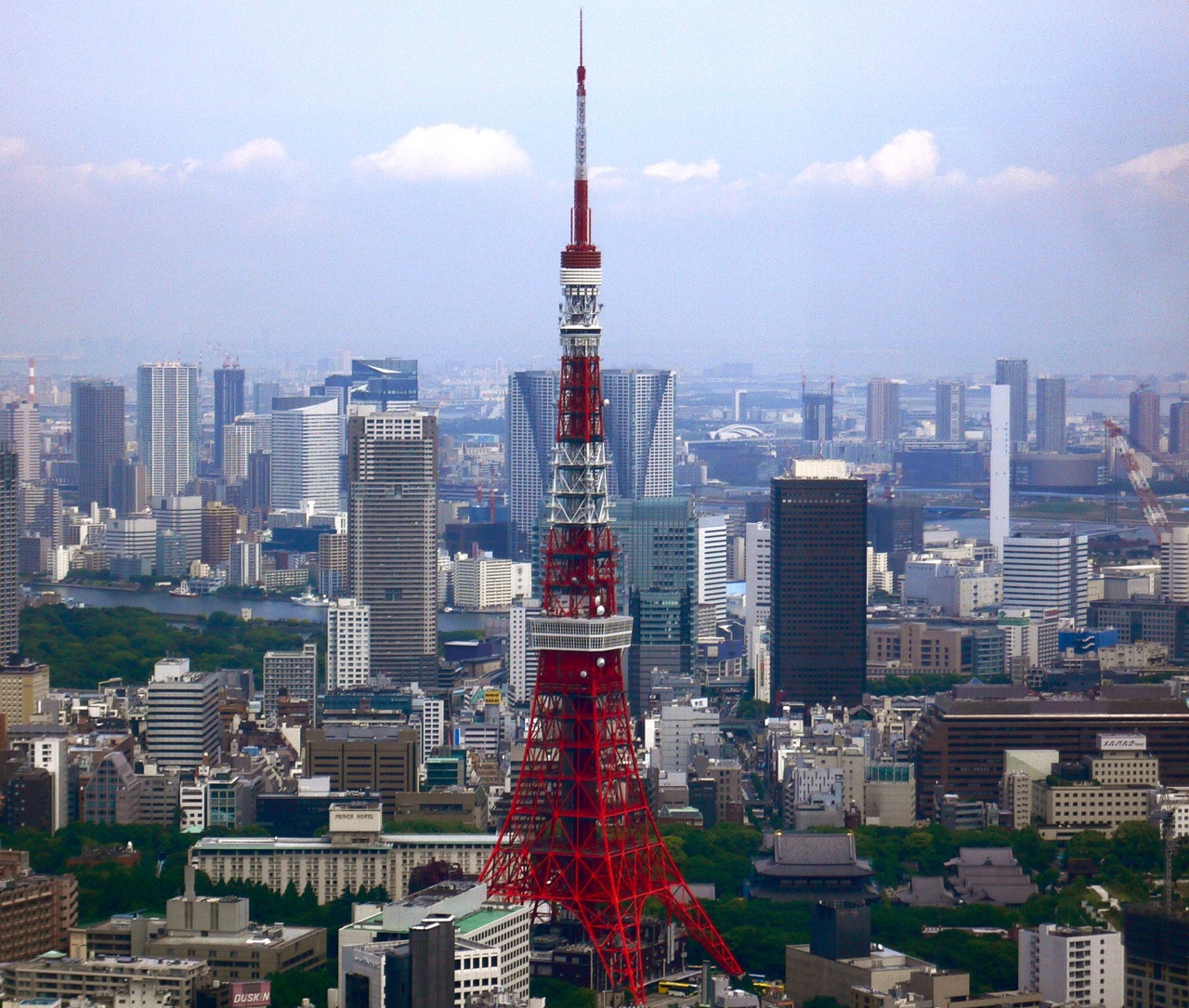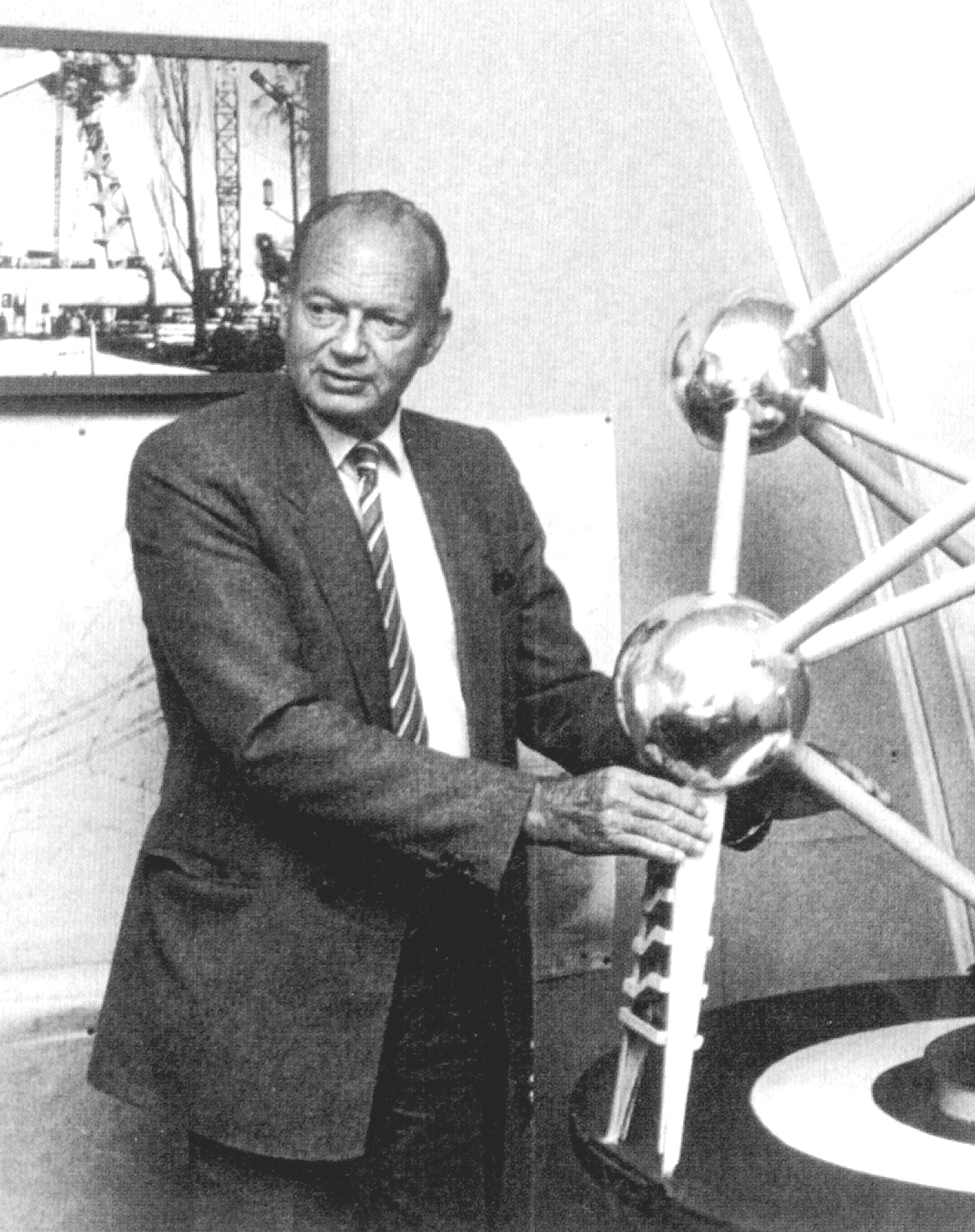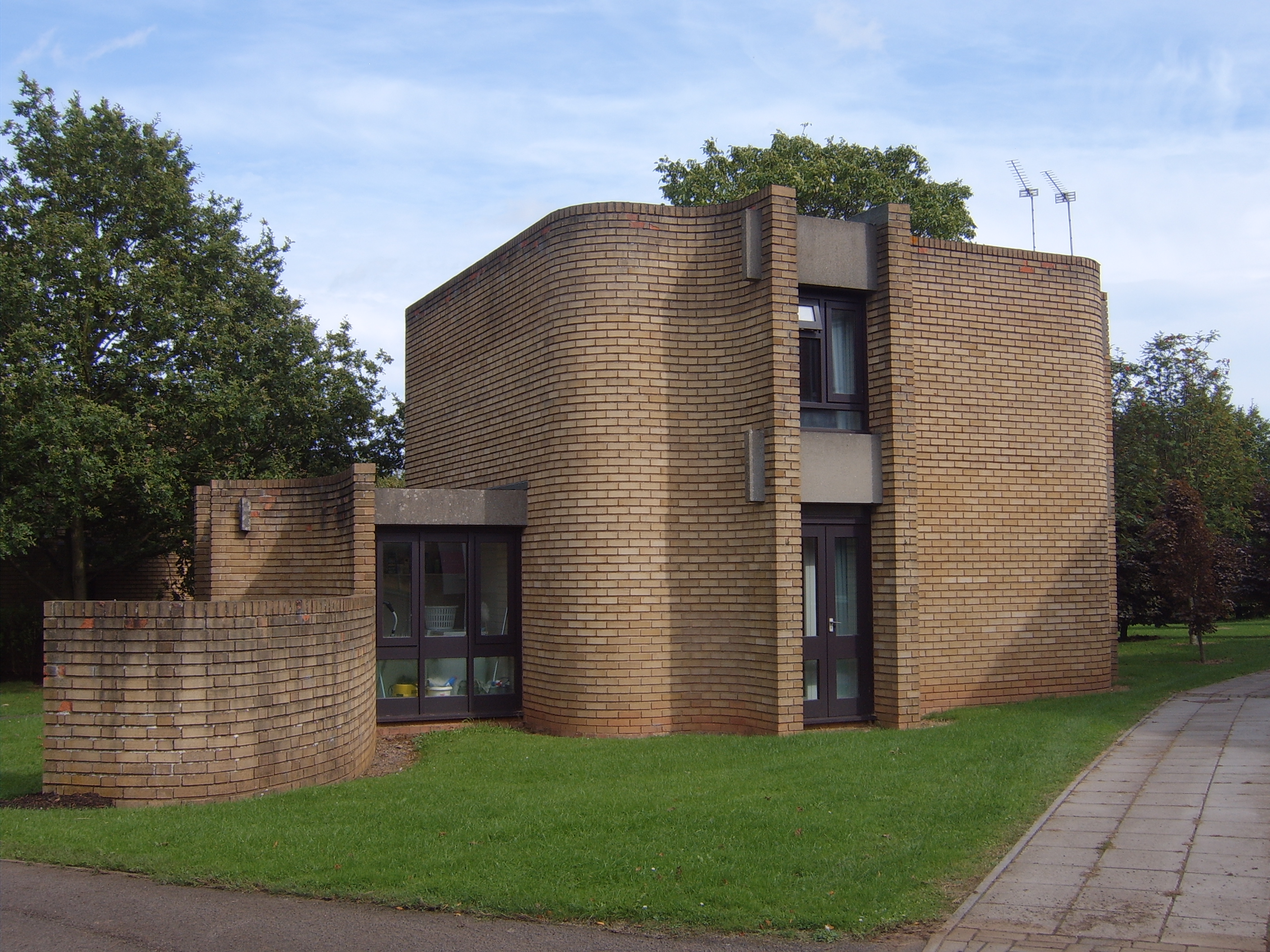|
1958 In Architecture
The year 1958 in architecture involved some significant architectural events and new buildings. Events * February 21 – The Irish Georgian Society, the group for the promotion of Georgian architecture in Ireland, is established by Desmond Guinness. * February 28 – The Victorian Society, the pressure group for the promotion and protection of Victorian and Edwardian Baroque architecture and related arts in the United Kingdom, holds its first meeting at Linley Sambourne House in London. * Alvar Aalto is commissioned to design the North Jutland Art Museum in Aalborg, Denmark (completed 1972). * Sanctuary of Divine Mercy (Sanktuarium Miłosierdzia Bożego), Kalisz, Poland is designed; it will not be built until 1977–93. * Competition for the design of Churchill College, Cambridge, England, is won by Richard Sheppard's practice, Sheppard Robson; the competition also launches the practice of Bill Howell (architect), Howell, Killick, Partridge and Amis. Buildings and structures ... [...More Info...] [...Related Items...] OR: [Wikipedia] [Google] [Baidu] |
February 21
Events Pre-1600 *452 or 453 – Severianus, Bishop of Scythopolis, is martyred in Palestine. *1245 – Thomas, the first known Bishop of Finland, is granted resignation after confessing to torture and forgery. * 1440 – The Prussian Confederation is formed. 1601–1900 *1613 – Mikhail I is unanimously elected Tsar by a national assembly, beginning the Romanov dynasty of Imperial Russia. * 1797 – A force of 1,400 French soldiers invaded Britain at Fishguard in support of the Society of United Irishmen. They were defeated by 500 British reservists. *1804 – The first self-propelling steam locomotive makes its outing at the Pen-y-Darren Ironworks in Wales. *1808 – Without a previous declaration of war, Russian troops cross the border to Sweden at Abborfors in eastern Finland, thus beginning the Finnish War, in which Sweden will lose the eastern half of the country (i.e. Finland) to Russia. *1828 – Initial issue of the Cherok ... [...More Info...] [...Related Items...] OR: [Wikipedia] [Google] [Baidu] |
Kalisz
(The oldest city of Poland) , image_skyline = , image_caption = ''Top:'' Town Hall, Former "Calisia" Piano Factory''Middle:'' Courthouse, "Gołębnik" tenement''Bottom:'' Aerial view of the Kalisz Old Town , image_flag = POL Kalisz flag.svg , flag_border = no , image_shield = POL Kalisz COA.svg , pushpin_map = Poland Greater Poland Voivodeship#Poland , pushpin_relief = 1 , pushpin_label_position = bottom , subdivision_type = Country , subdivision_name = , subdivision_type1 = Voivodeship , subdivision_name1 = , subdivision_type2 = County , subdivision_name2 = ''city-county'' , leader_title = Mayor , leader_name = Krystian Kinastowski , established_title = Established , established_date = 9th century , established_title3 = Town rights , established_date3 = after 1268 , area_total_km2 = 69.42 , population_as_of = 31 December 2021 , population_total = 97,905 ( 38th) Data for territorial unit 3061000. , population_density_km2 = 1472 , timezone = CET , utc ... [...More Info...] [...Related Items...] OR: [Wikipedia] [Google] [Baidu] |
André Waterkeyn
André Waterkeyn (23 August 1917 – 4 October 2005) was a Belgian engineer, born in Wimbledon, best known for creating the Atomium. Waterkeyn was the economic director of Fabrimetal (now Agoria), a federation of metallurgical companies when in 1954 he was asked to design a building for the 1958 World Expo that would symbolize Belgian engineering skills. Waterkeyn owned the copyrights of all reproductions of the Atomium until he passed it over to the organisation owning the original building around the years 2000. He was chairman of the board of the Atomium until 2002, when his son took over. He died in Brussels Brussels (french: Bruxelles or ; nl, Brussel ), officially the Brussels-Capital Region (All text and all but one graphic show the English name as Brussels-Capital Region.) (french: link=no, Région de Bruxelles-Capitale; nl, link=no, Bruss ... in 2005. After his death, the top sphere was named after him. van Capelleveen, R., 2011. André Waterkeyn (1917-20 ... [...More Info...] [...Related Items...] OR: [Wikipedia] [Google] [Baidu] |
Atomium
The Atomium ( , , ) is a landmark building in Brussels, Belgium, originally constructed for the 1958 Brussels World's Fair ( Expo '58). It is located on the Heysel/Heizel Plateau in Laeken (northern part of the City of Brussels), where the exhibition took place. Nowadays, it is the city's most popular tourist attraction, and serves as a museum, an art centre and a cultural place. Designed by the engineer André Waterkeyn and the architects André and Jean Polak, it stands tall. Its nine stainless steel clad spheres are connected in the shape of a unit cell that could represent an iron crystal magnified 165 billion times. Steel tubes connecting the spheres enclose stairs, escalators and an elevator (in the central, vertical tube) to allow access to the six visitable spheres, which contain exhibit halls and other public spaces. The top sphere includes a restaurant with a panoramic view of Brussels. The building was completely renovated between 2004 and 2006 by the compa ... [...More Info...] [...Related Items...] OR: [Wikipedia] [Google] [Baidu] |
Brussels
Brussels (french: Bruxelles or ; nl, Brussel ), officially the Brussels-Capital Region (All text and all but one graphic show the English name as Brussels-Capital Region.) (french: link=no, Région de Bruxelles-Capitale; nl, link=no, Brussels Hoofdstedelijk Gewest), is a region of Belgium comprising 19 municipalities, including the City of Brussels, which is the capital of Belgium. The Brussels-Capital Region is located in the central portion of the country and is a part of both the French Community of Belgium and the Flemish Community, but is separate from the Flemish Region (within which it forms an enclave) and the Walloon Region. Brussels is the most densely populated region in Belgium, and although it has the highest GDP per capita, it has the lowest available income per household. The Brussels Region covers , a relatively small area compared to the two other regions, and has a population of over 1.2 million. The five times larger metropolitan area of Brussel ... [...More Info...] [...Related Items...] OR: [Wikipedia] [Google] [Baidu] |
Expo '58
Expo 58, also known as the 1958 Brussels World's Fair (french: Exposition Universelle et Internationale de Bruxelles de 1958, nl, Brusselse Wereldtentoonstelling van 1958), was a world's fair held on the Heysel/Heizel Plateau in Brussels, Belgium, from 17 April to 19 October 1958. It was the first major world's fair registered under the Bureau International des Expositions (BIE) after World War II. Background Expo 58 was the eleventh world's fair hosted by Belgium, and the fifth in Brussels, following the fairs in 1888, 1897, 1910 and 1935. In 1953, Belgium won the bid for the next world's fair, winning out over other European capitals such as Paris and London. Nearly 15,000 workers spent three years building the site on the Heysel/Heizel Plateau, north-west of central Brussels. Many of the buildings were re-used from the 1935 World's Fair, which had been held on the same site. The theme of Expo 58 was ''"Bilan du monde, pour un monde plus humain"'' (in English: "Evaluat ... [...More Info...] [...Related Items...] OR: [Wikipedia] [Google] [Baidu] |
April 17
Events Pre-1600 * 1080 – Harald III of Denmark dies and is succeeded by Canute IV, who would later be the first Dane to be canonized. *1349 – The rule of the Bavand dynasty in Mazandaran is brought to an end by the murder of Hasan II. *1362 – Kaunas Castle falls to the Teutonic Order after a month-long siege. * 1492 – Spain and Christopher Columbus sign the Capitulations of Santa Fe for his voyage to Asia to acquire spices. *1521 – Trial of Martin Luther over his teachings begins during the assembly of the Diet of Worms. Initially intimidated, he asks for time to reflect before answering and is given a stay of one day. *1524 – Giovanni da Verrazzano reaches New York harbor. 1601–1900 * 1797 – Sir Ralph Abercromby attacks San Juan, Puerto Rico, in what would be one of the largest invasions of the Spanish territories in the Americas. * 1797 – Citizens of Verona begin an unsuccessful eight-day rebellion against the ... [...More Info...] [...Related Items...] OR: [Wikipedia] [Google] [Baidu] |
David Aberdeen
David William du Roi Aberdeen (13 August 1913 – 15 January 1987) was an English architect. In 1948, Aberdeen won an architectural competition to design the new TUC headquarters building in Great Russell Street, London. Staff began to move into the offices in 1956 and the building was officially opened in 1958. Today the building is Grade II* listed. Congress House was officially opened on 27 March 1958 along with the unveiling of the sculpture by Jacob Epstein Sir Jacob Epstein (10 November 1880 – 21 August 1959) was an American-British sculptor who helped pioneer modern sculpture. He was born in the United States, and moved to Europe in 1902, becoming a British subject in 1911. He often produc ..., intended as a memorial to the dead trade unionists of both world wars, in the courtyard. It was one of the earliest post-war buildings to be listed at Grade II*, in 1988. As of 2020, it still serves as the TUC's headquarters and is available on a private hire basis for ... [...More Info...] [...Related Items...] OR: [Wikipedia] [Google] [Baidu] |
Congress House
Congress House is the headquarters of the Trades Union Congress (TUC), a British organisation that represents most of the UK's trade unions. It is also an events venue, Congress Centre. In 1948, David du Roi Aberdeen won an architectural competition to design the new TUC headquarters building in Great Russell Street, London. Staff began to move into the offices in 1956. Congress House was officially opened on 27 March 1958 along with the unveiling of a giant '' pietà''-style statue of a woman holding her dead son. Carved in place in the internal courtyard by Jacob Epstein, it was intended as a memorial to the dead trade unionists of both world wars. The front of the building ... [...More Info...] [...Related Items...] OR: [Wikipedia] [Google] [Baidu] |
March 27
Events Pre-1600 *1309 – Pope Clement V imposes excommunication and interdiction on Venice, and a general prohibition of all commercial intercourse with Venice, which had seized on Ferrara, a papal fiefdom. * 1329 – Pope John XXII issues his ''In Agro Dominico'' condemning some writings of Meister Eckhart as heretical. *1513 – Spanish explorer Juan Ponce de León reaches the northern end of The Bahamas on his first voyage to Florida. 1601–1900 *1625 – Charles I becomes King of England, Scotland and Ireland as well as claiming the title King of France. *1638 – The first of four destructive Calabrian earthquakes strikes southern Italy. Measuring magnitude 6.8 and assigned a Mercalli intensity of XI, it kills 10,000–30,000 people. *1782 – The Second Rockingham ministry assumes office in Great Britain and begins negotiations to end the American War of Independence. *1794 – The United States Government establishes a permanent navy and a ... [...More Info...] [...Related Items...] OR: [Wikipedia] [Google] [Baidu] |
09 10 2016 - Jantar Com A Base Aliada No Palácio Da Alvorada (35487619353)
9 (nine) is the natural number following and preceding . Evolution of the Arabic digit In the beginning, various Indians wrote a digit 9 similar in shape to the modern closing question mark without the bottom dot. The Kshatrapa, Andhra and Gupta started curving the bottom vertical line coming up with a -look-alike. The Nagari continued the bottom stroke to make a circle and enclose the 3-look-alike, in much the same way that the sign @ encircles a lowercase ''a''. As time went on, the enclosing circle became bigger and its line continued beyond the circle downwards, as the 3-look-alike became smaller. Soon, all that was left of the 3-look-alike was a squiggle. The Arabs simply connected that squiggle to the downward stroke at the middle and subsequent European change was purely cosmetic. While the shape of the glyph for the digit 9 has an ascender in most modern typefaces, in typefaces with text figures the character usually has a descender, as, for example, in . The mod ... [...More Info...] [...Related Items...] OR: [Wikipedia] [Google] [Baidu] |
Bill Howell (architect)
William Gough Howell DFC ARA ARA may refer to: Media and the arts * American-Romanian Academy of Arts and Sciences * '' Artistička Radna Akcija'', compilation album released in former Yugoslavia * Associate of the Royal Academy, denoting membership in the British Royal Acad ... (1922 – 29 November 1974) was a British architect, the leading force in the firm of Howell, Killick, Partridge and Amis, and chair of the architecture department at Cambridge University from 1973 until his death the following year in a road accident. He was the son of Charles Gough Howell, Attorney-General of Singapore from 1936 to 1942, and his Australian wife, Sidney Gretchen Innes-Noad. He was educated at Marlborough College, before joining the Royal Air Force in 1939. After the war, he studied architecture at Gonville and Caius College, Cambridge. Howell designed the Houses for Visiting Mathematicians (also known as the Mathematics Research Centre houses), a set of five houses and two flats, bu ... [...More Info...] [...Related Items...] OR: [Wikipedia] [Google] [Baidu] |






